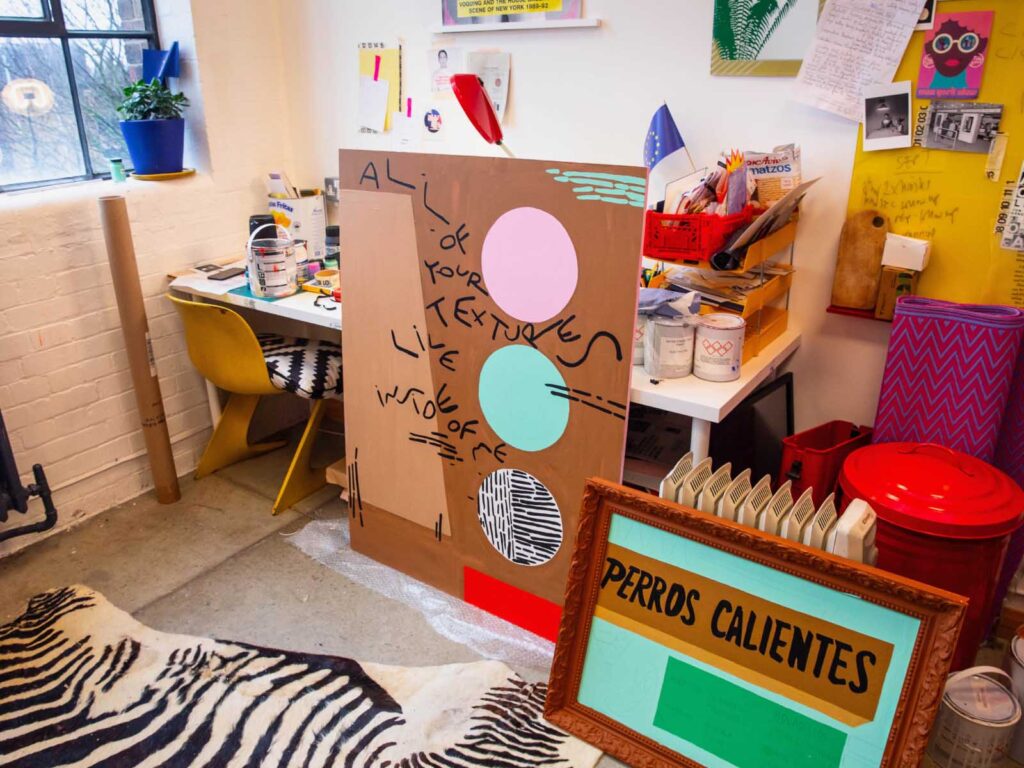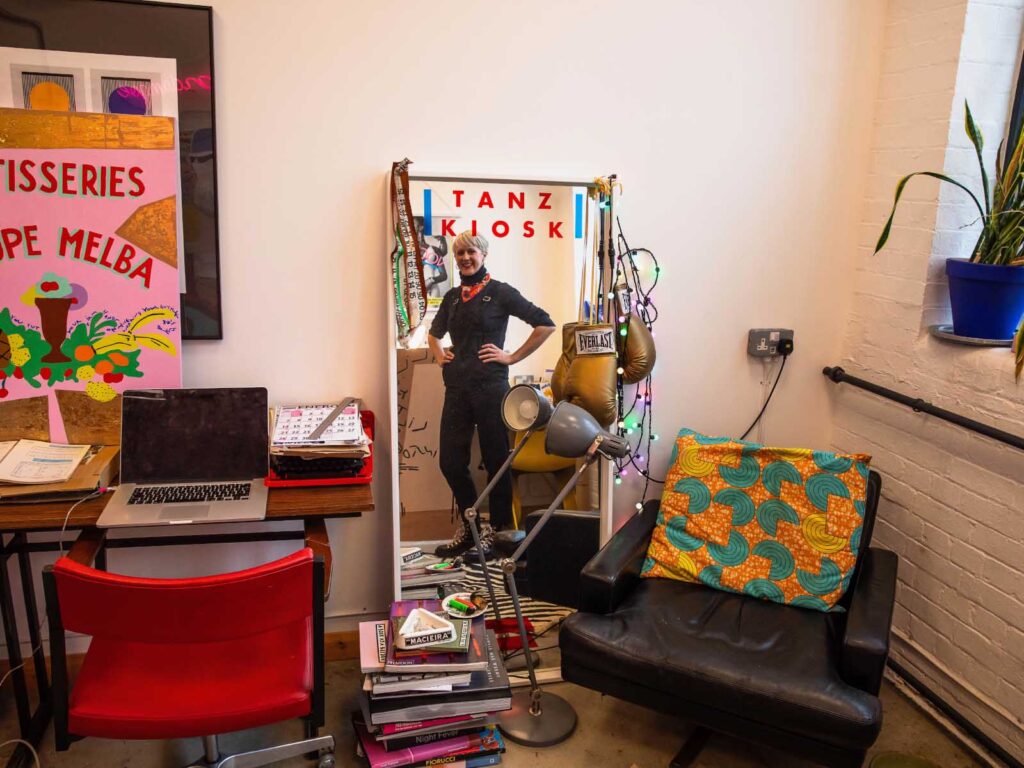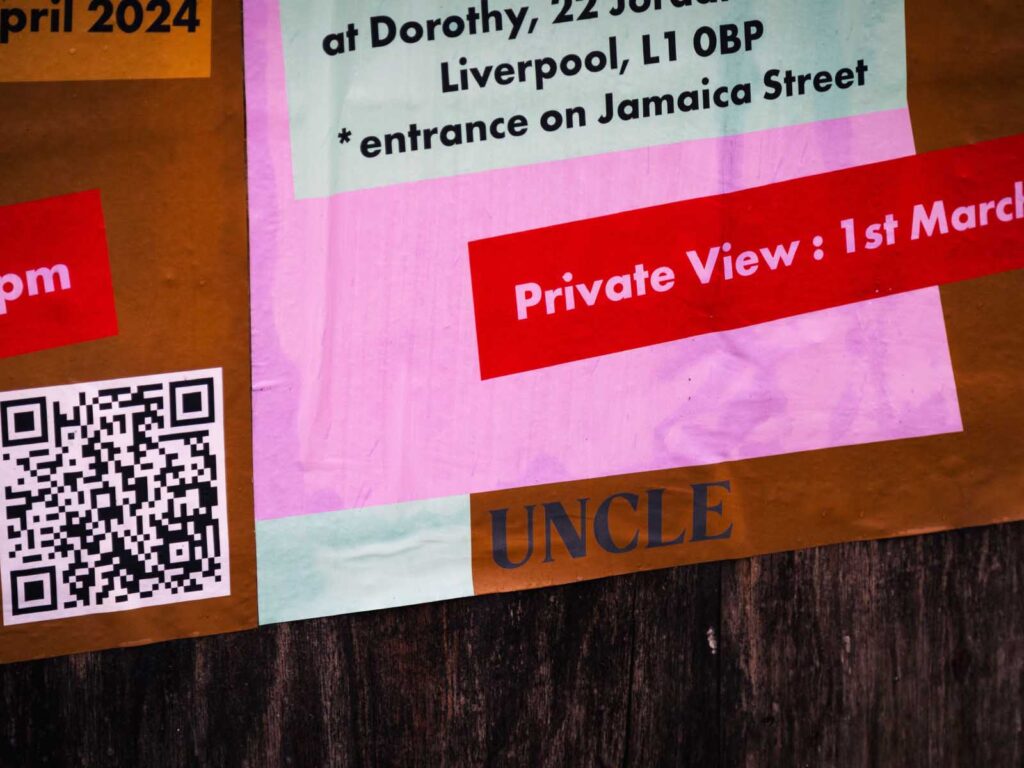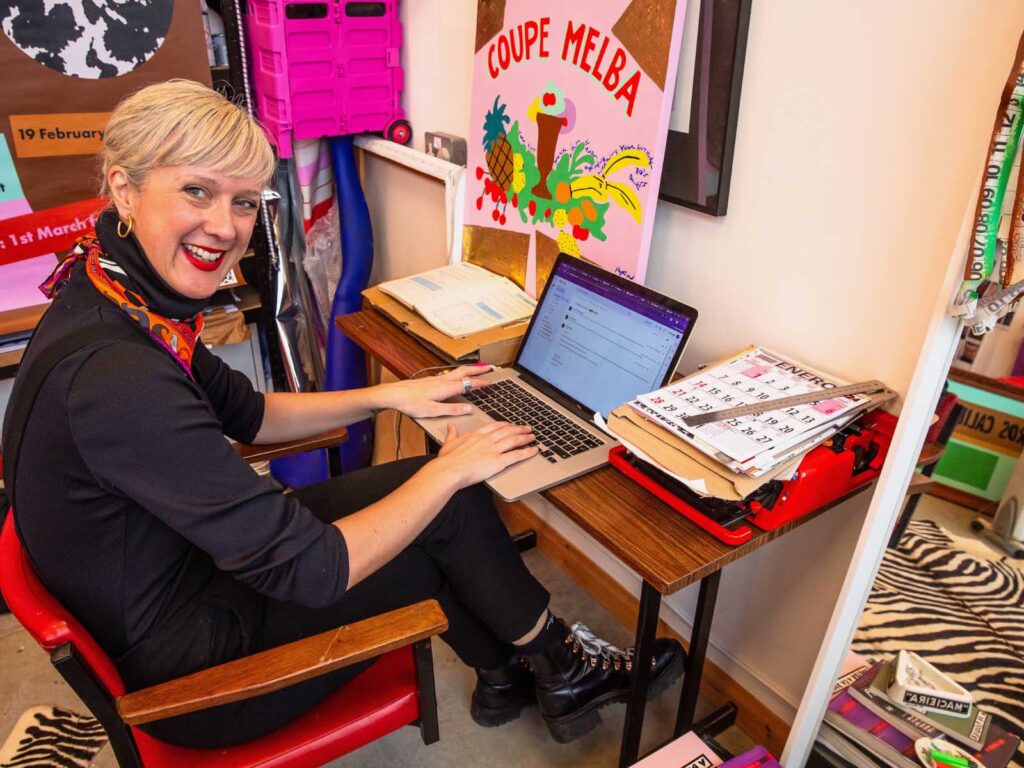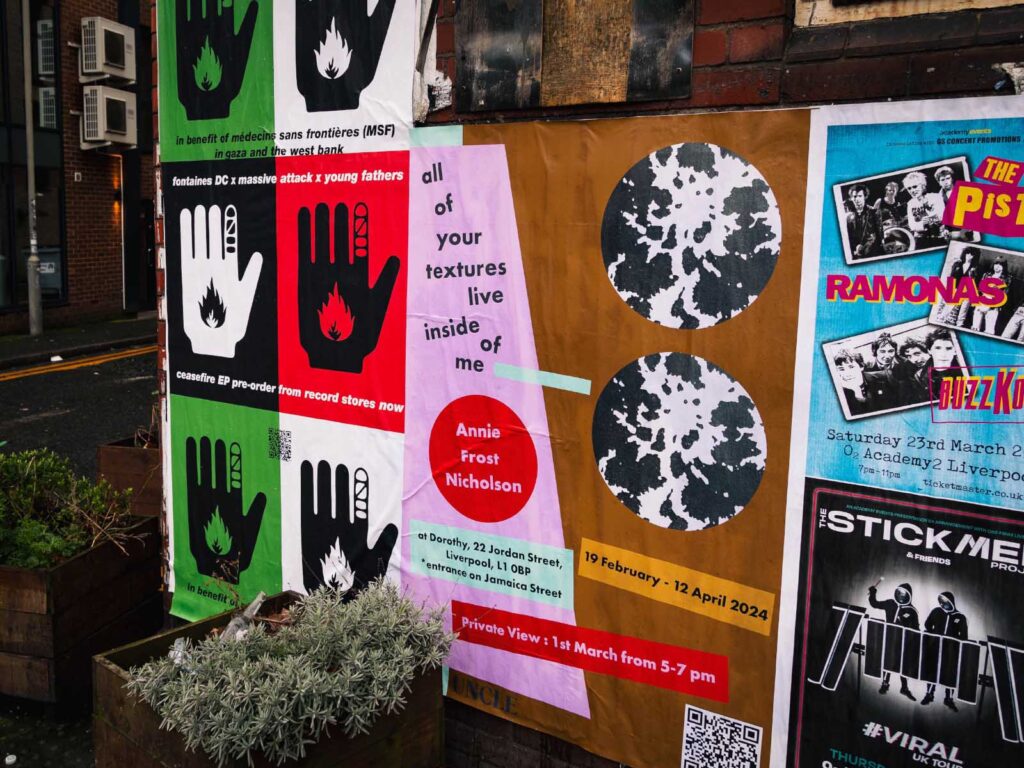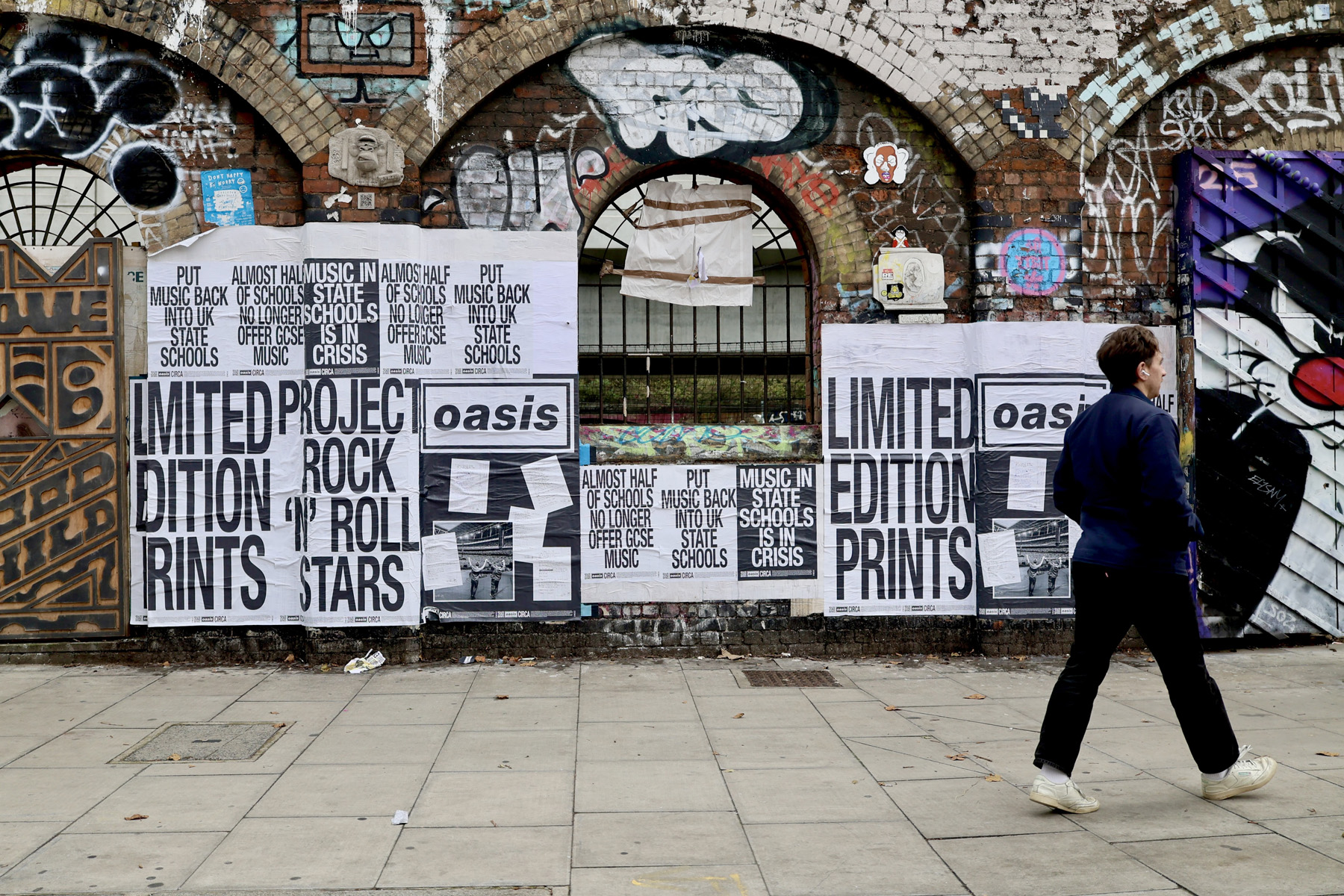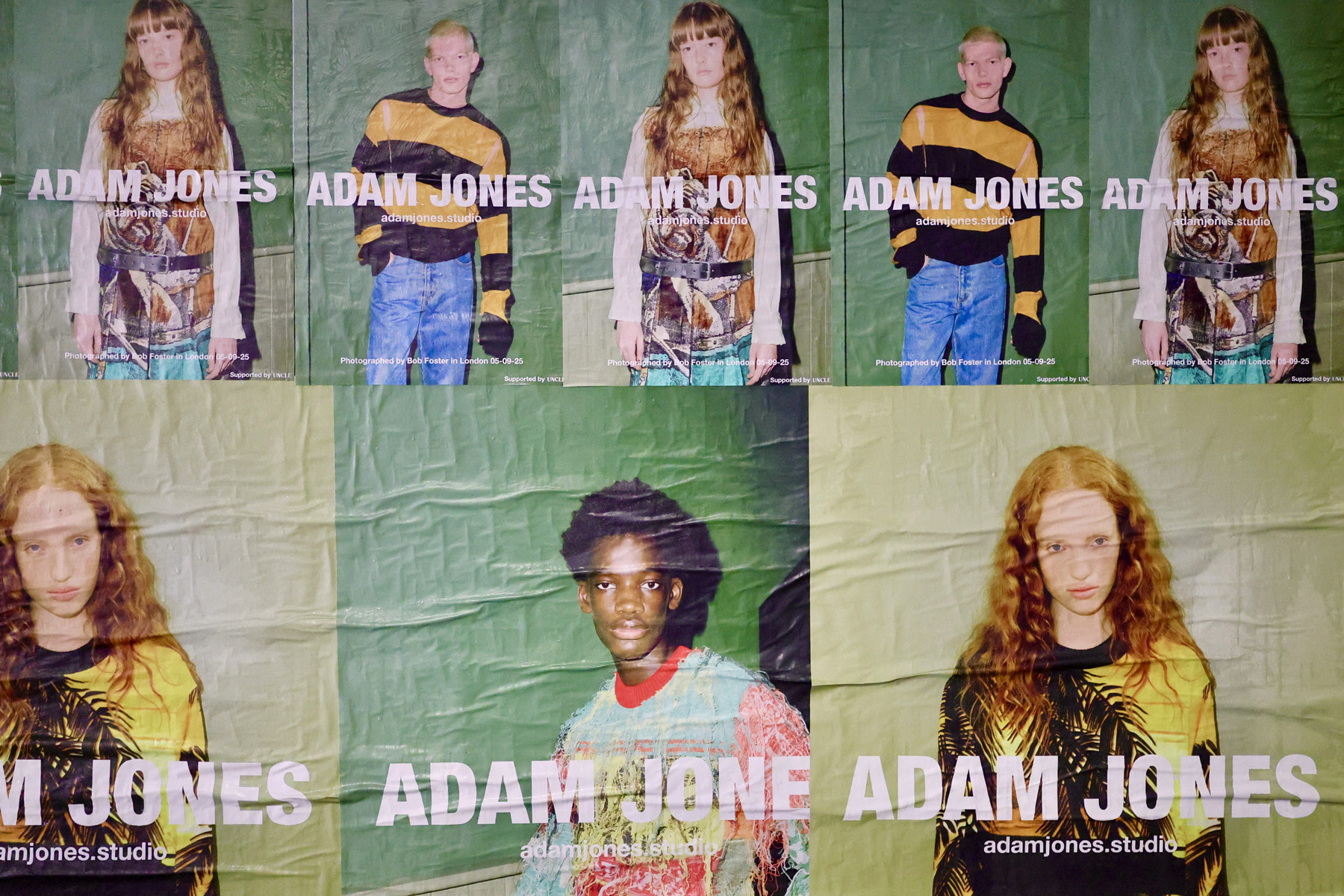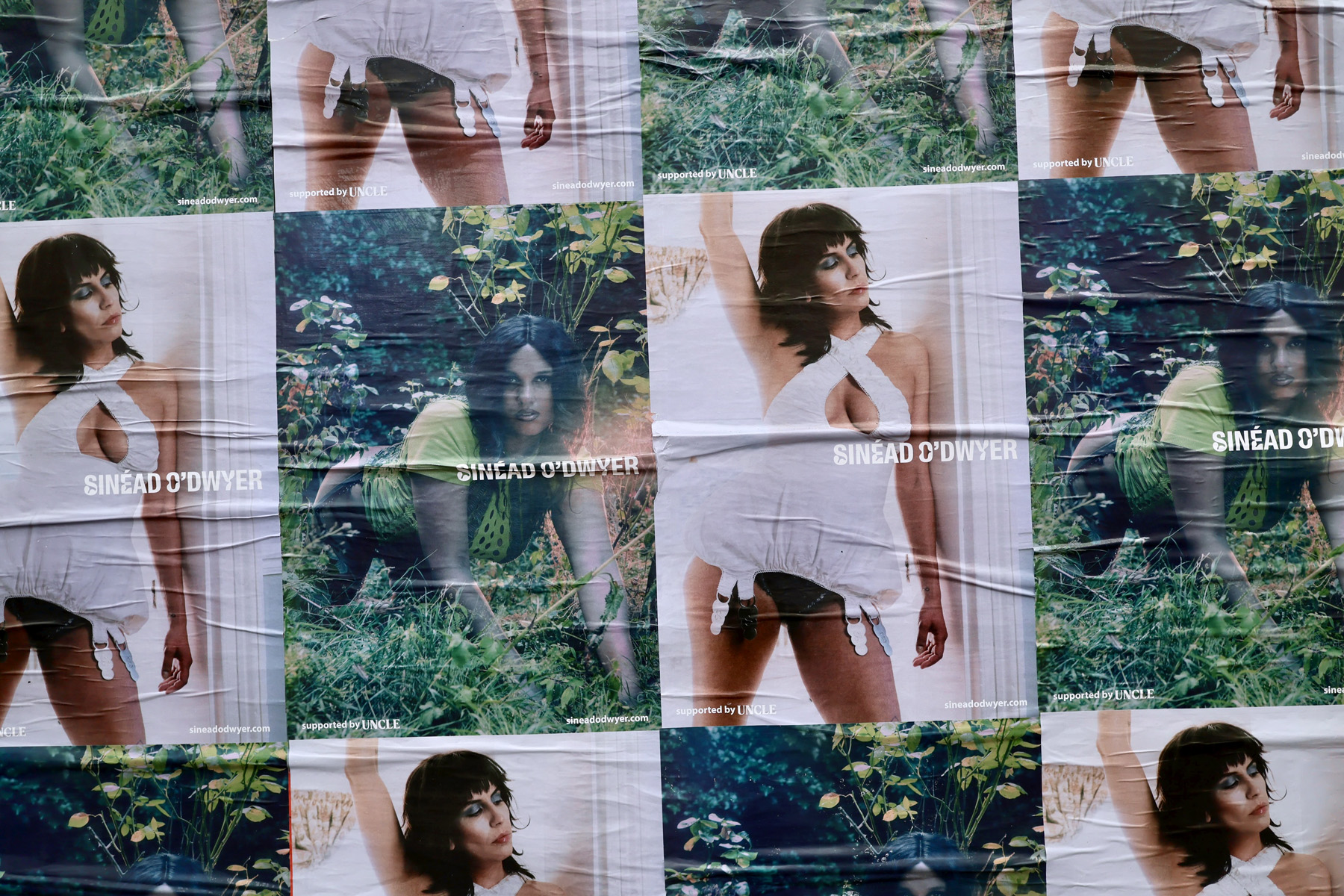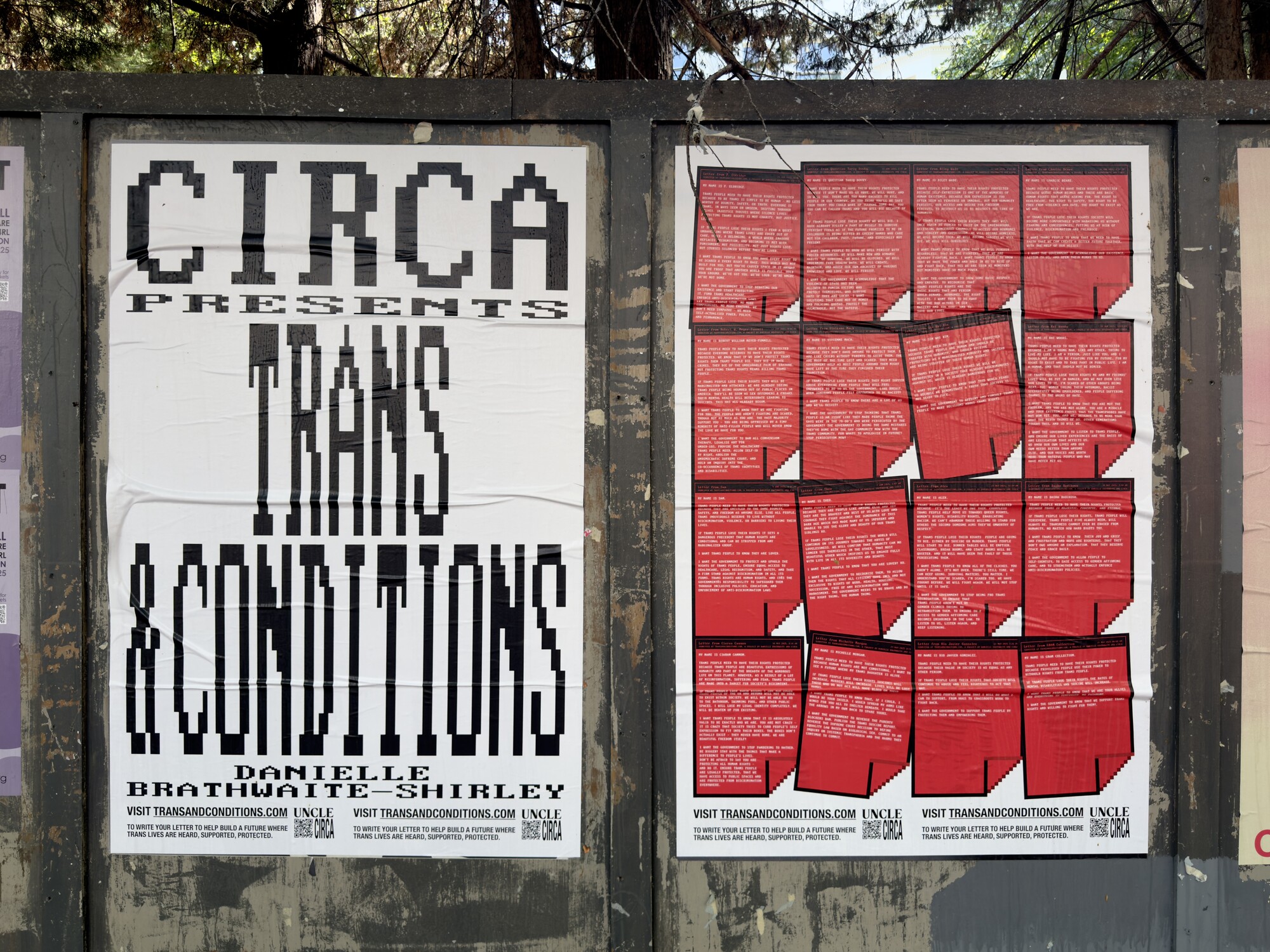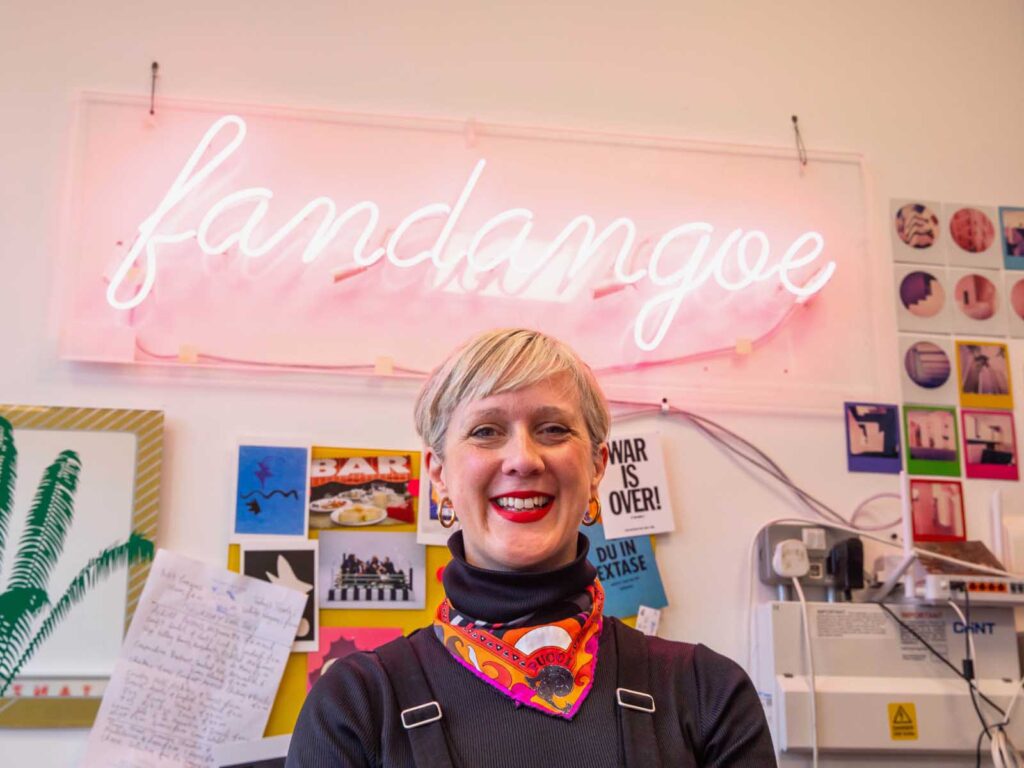
Annie Frost Nicholson (an artist formerly known as The Fandagoe Kid) has been building anticipation for her captivating exhibition, “All of Your Textures Live Inside of Me”. The show itself is an exploration of grief and how these thematic underpinnings can be used as a force for good. The show’s genesis being Nicholson’s own experience with loss, something she has now turned into a “a brightly coloured sanctuary where you can calmly reflect on what’s been and what is”.
Her work itself has been characterised with a fusion of visuals and prose, bold patterns and geometric shapes, often drawn and inspired by culture of the urban landscape. Her artwork blends together various communication mediums, ensuring that people can interpret them on multiple levels. This flexibility not only distinguishes her work but also enables it to transcend mere interpretation, having an allure that invites deeper analysis, whilst also holding steadfast in its personal motive.
UNCLE partnered with Nicholson to get eyes on streets in Liverpool with a flyposting campaign that we paired with an interview and studio shoot to get the full 360 on the story. We delved into her creative psyche and how she uses layers of personal history to fuel her work.
HOW DID THE NAME ‘ALL OF YOUR TEXTURES LIVE INSIDE OF ME’ COME TO BE?
It’s really an ode to both life itself and the family I’ve lost, whose stories and particularities of our lives lived together I carry around with me wherever I go. This strong interior world has kind of lined my body for the hard knocks of survival, following the loss of all of them when I was younger. Holding them in this way has also impacted how I view the world, my fascination with small details, found objects, polaroids and ephemera, and how we bring through the past into the present in landscapes, architecture, rituals, food and navigating space.
WHAT IS YOUR ASPIRATION FOR THE SHOW?
I would like to take people into their own interior world, a safe one, where they can just exist, as they are—a brightly coloured sanctuary where you can calmly reflect on what’s been and what is, and draw them closer to one another. I’ve loved creating this work, it’s been a chance to fully immerse myself in the safety of my practice, it’s long been my mode of survival and peace, but rare that I’ve had the chance to work in such a dedicated way on a solo show. The experience has been so profound, a real chance to be alone with some family characters that I miss so dearly, to commune with them, but also to bring them with me into my present life, which is a hard earned happy one. I’ve loved the chance to merge worlds, it’s been strangely all the more life affirming.
WHY IS THIS SHOW DIFFERENT FROM THE OTHER PUBLIC ART YOU HAVE DISPLAYED BEFORE?
In many ways, this is probably the most personal work I’ve made to date. It’s felt like a real excavation, and a cleansing, to go within, rather than reach outwards, as I have done for so many years with the public art (which has been and continues to be a very important part of my practice). I’ve discovered that I need to work more in this way, that I take so much energy from being able to burrow away in my thoughts and create a personal body of work, which doesn’t ask the same questions of its audiences as the public art. It’s a gentle invitation into an interior world, without solutions, but hopefully with the promise of some calm once you enter the space.
WHY IS GRIEF A PROMINENT THEME THROUGH YOUR WORK?
Grief has been a part of me for the past 12 years since losing many family members in a short space of time. It’s almost become another family member itself, I know it so well and my relationship is ever changing and evolving (and sometimes regressing, as is the nature of it!). It has been something to integrate, to work with, as there’s been no side stepping it. It’s taken me to depths I’m fairly sure I would never have gone to if these tragic events hadn’t happened to me and it has changed me, forever. Grief lives inside of me and because it’s so inextricably linked to those people I love, who I can’t be with, there is also some bittersweet joy within it, as it’s a portal into a world with them.
WHAT DO YOU HOPE YOUR WORK IS ABLE TO CONVEY?
I am interested in how memory works, particularly as a kind of fictionalising device. My specific use of place and geography – store fronts, train platforms, doorways; glimpsed, recorded, half-remembered – act as portals to access the past, but altered, reimagined, and subject to my own fantasies of colour, light, texture. In a sense the paintings are my way of accepting that we can’t reinhabit the past truly as it was, but we can create something other in its honour. The show as a whole hovers on a sentence from WG Sebald, ‘the thin piece of silk between life and death’— we never really lose anything dear to us if we know how to hold it carefully within ourselves, and so I would like to think this may be a hopeful, joyful offering on one level that prompts people to think about the many experiences, decisions and fateful events that have led each of us down our own path to make the life we have.
TELL US ABOUT HOW YOU FOUND YOUR STRIKING STYLE AND THEMING CHOICES?
I’ve always been drawn to bold palettes and geometry—I love language and the science of language and I’m a linguist, so my choices in life were either to be a translator or an artist (I’m sure my parents would have worried a lot less with the first option). I feel like it was then inevitable for language to appear so much in my work, and there’s a real fascination with structure and the architecture of language too. Sottsass’ use of colour and form has been a huge influence, along with Jenny Holzer’s political and playful use of text. Sophie Calle is also a hero of mine, she totally changed the way I see the world, the unabashed way she mines her own autobiography, and lays bare some of the worst times of her life, but also the mundane, the bizarre, the comedic and the tragic. Then there’s one of my best friends, Camille Walala, who I’ve known since I was barely an adult, and I probably became a woman within the years of our friendship – her approach to scale, pattern and palette, and her impeccable taste, will always inspire me. My parents were very bold dressers, the whole family has always been quite audacious in their sartorial choices, as was their taste in interior design, and most aspects of their lives! So I think I’ve learnt to pay attention to detail early, and I also learnt the art of living well from them, and much of that to me means living with colour, in colour, trying to make a living from what you love, and paying attention to very small moments, mostly ones that are free and fleeting.
WHY ARE YOU DRAWN TO THE STYLISTIC CHOICES YOU ARE? INSTALLATIONS, COLOUR ETC…
I am a city person, through and through. I don’t know if it’s because I grew up far away from one, and longed to get into the action since day one, but when I left home, I never looked back — I love sharing a cityscape with other city dwellers, I love noticing details and nuances in architecture and all of the energy that passes through a city space, all of the stories you are told, that you overhear, that you’re sometimes lucky enough to be a part of. It’s the total lifeblood of my being and so I really enjoy creating work that speaks to our daily tempo and all that lies beneath it, all the strata that form us and allow us to get up and tackle a new day, no matter what we are carrying. I like to think about space and how we can find outlets for complex and often taboo conversations to unfold within our busy lives, right where we are, so all of the work I make hopes to be an invitation to show up as you are and take some time for you, to go inwards. The use of colour and form come from long standing influences (as I’ve mentioned above) and I think they often defy expectations and juxtapose the subject matter, so this may come as a surprise! But again, I want people to access these complex themes and intersections of grief as they choose, as they are on any given day, without prescription.
DOES CULTURE AND CITY LIFE PLAY A KEY PART IN YOUR CREATIVITY?
Even before my preoccupation with life and death, I’ve always been fascinated by the human condition – and how other artists, artforms, places, architectures, people, and cities respond to its complexities is central to both my understanding of what life even is(!) and my practice. I’ve just come back from a long-awaited trip to Mexico City, which really was a dream and I found so much joy in the architecture, the light, the patterns, the food, the Barragan houses! In London, I love to go for walks through the neighbourhood, in Nunhead, Peckham, where my studio also is. I love Review Bookshop in Peckham. Over the past few years especially, I have found a lot of inspiration in fiction, particularly really visual writers like Deborah Levy. I recently totally immersed myself in Baumgarten by Paul Auster, which felt like such a powerful response to grief. I was sad to leave his world when it ended! Another key ritual for me is going to Roti King on Lower Marsh in London, followed by a trip to the BFI—I recently saw Joanna Hogg’s The Eternal Daughter, which gave me lots of ideas for my next collaborative project, a feature film about my mother. I feel often so lucky to have such amazing cultural resources right on my doorstep, it feeds into my creative process greatly. The best show I’ve seen recently was Sophie Calle, A toi de faire ma mignonne, in Paris—everything about it left me in awe.
WHAT IS YOUR INTENTION WITH THE POSTER DESIGN?
The poster design feels very 70’s as is this body of work, which is all about detail and how we form our interior worlds through memory, place and dreams. The poster itself takes elements from some of the tufting work that features in the show; the brilliant Bon Tuft translated my designs into wall pieces. I think I want people to stop because they may see something joyful or fun in the design and then learn from the text and QR code that they are being invited into a world where they can pull away some of the armour we carry with us on a daily basis to stay afloat.
WHY DID YOU DECIDE TO DO THE SHOW IN LIVERPOOL?
I’ve known Ali and Jim at Dorothy for a while and always loved them and what they stand for. It’s really so special to bring this work to Liverpool, a city where I really feel at home. I’ve had so many friendly encounters here and I often get told some great stories here, by strangers, with brilliant humour. My dad was from Blackpool, and left home at 15 to go into the navy—Liverpool was the place he sailed out into the world from, his first time leaving the country for many an adventure, and so he always spoke so fondly of the city. We have a lot of family memories here. Last year, I discovered I have a sister I didn’t know about and we met in Liverpool for the first time, and visited Dorothy! So it feels very fitting as so much of the work is a kind of unravelling of new emotional landscapes from the past year or so.
WHAT ARE THREE THINGS YOU LOVE ABOUT LIVERPOOL?
I love the people, the humour, the storytelling that I’ve been so lucky to be invited into on occasions.
I love the wild mix of architecture – the way the city wears its history right on the surface. When I was last here, an old friend, mentor and Liverpudlian, Eddie Berg, founder of FACT, who has some great insider knowledge on the city, told me to go to Liverpool Metropolitan Cathedral. It blew my mind.
I really enjoy Dallas Buyer’s Club and Malay for food and there’s a brilliant bagel shop called the Bagelry, all of which I will be revisiting during the show. It really is a special city.

